Youlong Wu
SITP: A High-Reliability Semantic Information Transport Protocol Without Retransmission for Semantic Communication
Dec 10, 2025Abstract:With the evolution of 6G networks, modern communication systems are facing unprecedented demands for high reliability and low latency. However, conventional transport protocols are designed for bit-level reliability, failing to meet the semantic robustness requirements. To address this limitation, this paper proposes a novel Semantic Information Transport Protocol (SITP), which achieves TCP-level reliability and UDP level latency by verifying only packet headers while retaining potentially corrupted payloads for semantic decoding. Building upon SITP, a cross-layer analytical model is established to quantify packet-loss probability across the physical, data-link, network, transport, and application layers. The model provides a unified probabilistic formulation linking signal noise rate (SNR) and packet-loss rate, offering theoretical foundation into end-to-end semantic transmission. Furthermore, a cross-image feature interleaving mechanism is developed to mitigate consecutive burst losses by redistributing semantic features across multiple correlated images, thereby enhancing robustness in burst-fade channels. Extensive experiments show that SITP offers lower latency than TCP with comparable reliability at low SNRs, while matching UDP-level latency and delivering superior reconstruction quality. In addition, the proposed cross-image semantic interleaving mechanism further demonstrates its effectiveness in mitigating degradation caused by bursty packet losses.
Modeling and Performance Analysis for Semantic Communications Based on Empirical Results
Apr 29, 2025
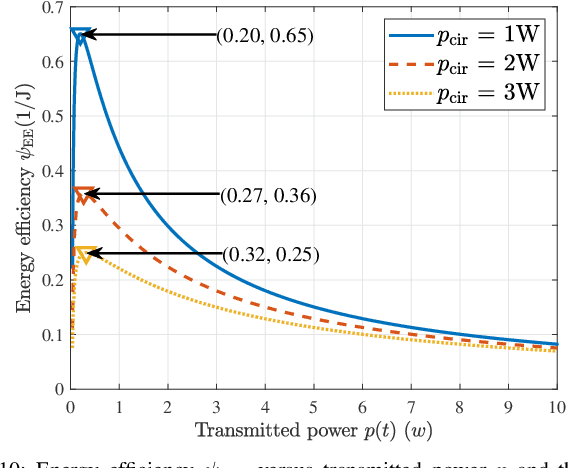

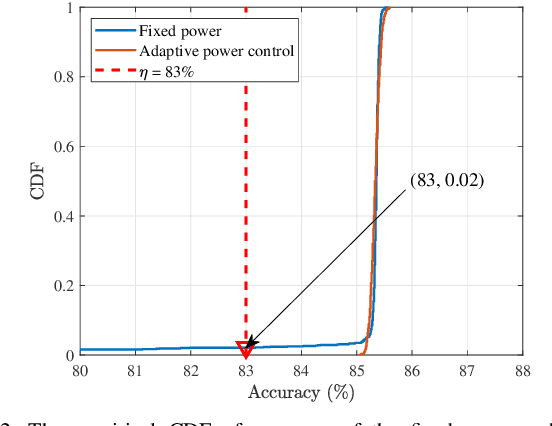
Abstract:Due to the black-box characteristics of deep learning based semantic encoders and decoders, finding a tractable method for the performance analysis of semantic communications is a challenging problem. In this paper, we propose an Alpha-Beta-Gamma (ABG) formula to model the relationship between the end-to-end measurement and SNR, which can be applied for both image reconstruction tasks and inference tasks. Specifically, for image reconstruction tasks, the proposed ABG formula can well fit the commonly used DL networks, such as SCUNet, and Vision Transformer, for semantic encoding with the multi scale-structural similarity index measure (MS-SSIM) measurement. Furthermore, we find that the upper bound of the MS-SSIM depends on the number of quantized output bits of semantic encoders, and we also propose a closed-form expression to fit the relationship between the MS-SSIM and quantized output bits. To the best of our knowledge, this is the first theoretical expression between end-to-end performance metrics and SNR for semantic communications. Based on the proposed ABG formula, we investigate an adaptive power control scheme for semantic communications over random fading channels, which can effectively guarantee quality of service (QoS) for semantic communications, and then design the optimal power allocation scheme to maximize the energy efficiency of the semantic communication system. Furthermore, by exploiting the bisection algorithm, we develop the power allocation scheme to maximize the minimum QoS of multiple users for OFDMA downlink semantic communication Extensive simulations verify the effectiveness and superiority of the proposed ABG formula and power allocation schemes.
Structured IB: Improving Information Bottleneck with Structured Feature Learning
Dec 11, 2024Abstract:The Information Bottleneck (IB) principle has emerged as a promising approach for enhancing the generalization, robustness, and interpretability of deep neural networks, demonstrating efficacy across image segmentation, document clustering, and semantic communication. Among IB implementations, the IB Lagrangian method, employing Lagrangian multipliers, is widely adopted. While numerous methods for the optimizations of IB Lagrangian based on variational bounds and neural estimators are feasible, their performance is highly dependent on the quality of their design, which is inherently prone to errors. To address this limitation, we introduce Structured IB, a framework for investigating potential structured features. By incorporating auxiliary encoders to extract missing informative features, we generate more informative representations. Our experiments demonstrate superior prediction accuracy and task-relevant information preservation compared to the original IB Lagrangian method, even with reduced network size.
Semantic Feature Division Multiple Access for Multi-user Digital Interference Networks
Jul 11, 2024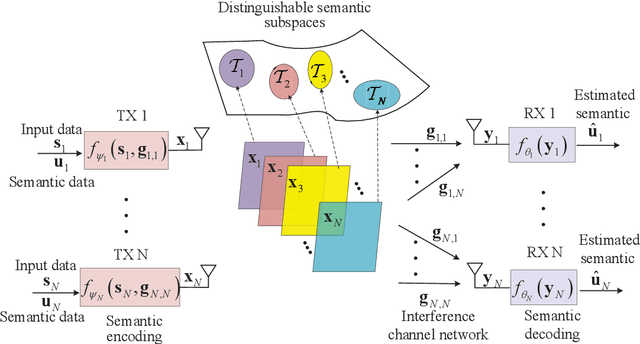
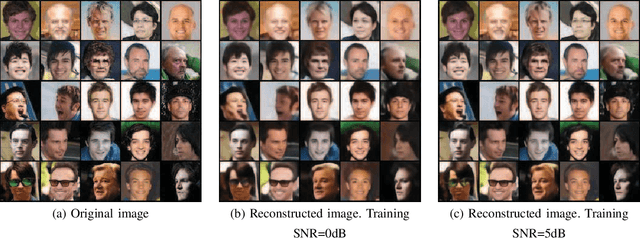
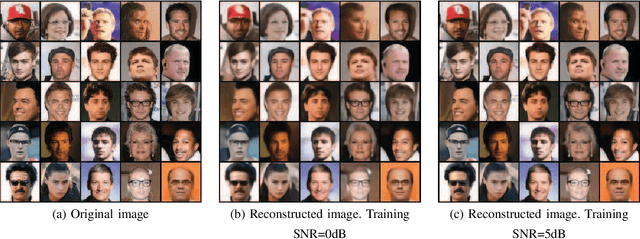
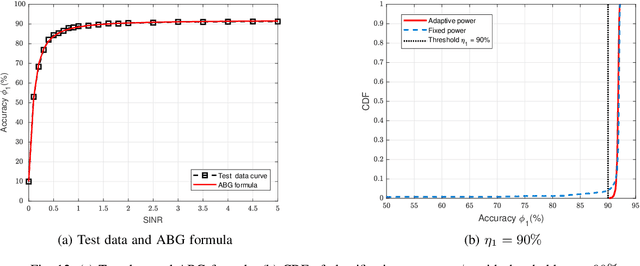
Abstract:With the ever-increasing user density and quality of service (QoS) demand,5G networks with limited spectrum resources are facing massive access challenges. To address these challenges, in this paper, we propose a novel discrete semantic feature division multiple access (SFDMA) paradigm for multi-user digital interference networks. Specifically, by utilizing deep learning technology, SFDMA extracts multi-user semantic information into discrete representations in distinguishable semantic subspaces, which enables multiple users to transmit simultaneously over the same time-frequency resources. Furthermore, based on a robust information bottleneck, we design a SFDMA based multi-user digital semantic interference network for inference tasks, which can achieve approximate orthogonal transmission. Moreover, we propose a SFDMA based multi-user digital semantic interference network for image reconstruction tasks, where the discrete outputs of the semantic encoders of the users are approximately orthogonal, which significantly reduces multi-user interference. Furthermore, we propose an Alpha-Beta-Gamma (ABG) formula for semantic communications, which is the first theoretical relationship between inference accuracy and transmission power. Then, we derive adaptive power control methods with closed-form expressions for inference tasks. Extensive simulations verify the effectiveness and superiority of the proposed SFDMA.
Privacy for Fairness: Information Obfuscation for Fair Representation Learning with Local Differential Privacy
Feb 16, 2024Abstract:As machine learning (ML) becomes more prevalent in human-centric applications, there is a growing emphasis on algorithmic fairness and privacy protection. While previous research has explored these areas as separate objectives, there is a growing recognition of the complex relationship between privacy and fairness. However, previous works have primarily focused on examining the interplay between privacy and fairness through empirical investigations, with limited attention given to theoretical exploration. This study aims to bridge this gap by introducing a theoretical framework that enables a comprehensive examination of their interrelation. We shall develop and analyze an information bottleneck (IB) based information obfuscation method with local differential privacy (LDP) for fair representation learning. In contrast to many empirical studies on fairness in ML, we show that the incorporation of LDP randomizers during the encoding process can enhance the fairness of the learned representation. Our analysis will demonstrate that the disclosure of sensitive information is constrained by the privacy budget of the LDP randomizer, thereby enabling the optimization process within the IB framework to effectively suppress sensitive information while preserving the desired utility through obfuscation. Based on the proposed method, we further develop a variational representation encoding approach that simultaneously achieves fairness and LDP. Our variational encoding approach offers practical advantages. It is trained using a non-adversarial method and does not require the introduction of any variational prior. Extensive experiments will be presented to validate our theoretical results and demonstrate the ability of our proposed approach to achieve both LDP and fairness while preserving adequate utility.
One-Bit Byzantine-Tolerant Distributed Learning via Over-the-Air Computation
Oct 19, 2023Abstract:Distributed learning has become a promising computational parallelism paradigm that enables a wide scope of intelligent applications from the Internet of Things (IoT) to autonomous driving and the healthcare industry. This paper studies distributed learning in wireless data center networks, which contain a central edge server and multiple edge workers to collaboratively train a shared global model and benefit from parallel computing. However, the distributed nature causes the vulnerability of the learning process to faults and adversarial attacks from Byzantine edge workers, as well as the severe communication and computation overhead induced by the periodical information exchange process. To achieve fast and reliable model aggregation in the presence of Byzantine attacks, we develop a signed stochastic gradient descent (SignSGD)-based Hierarchical Vote framework via over-the-air computation (AirComp), where one voting process is performed locally at the wireless edge by taking advantage of Bernoulli coding while the other is operated over-the-air at the central edge server by utilizing the waveform superposition property of the multiple-access channels. We comprehensively analyze the proposed framework on the impacts including Byzantine attacks and the wireless environment (channel fading and receiver noise), followed by characterizing the convergence behavior under non-convex settings. Simulation results validate our theoretical achievements and demonstrate the robustness of our proposed framework in the presence of Byzantine attacks and receiver noise.
Robust Power Allocation for Integrated Visible Light Positioning and Communication Networks
May 17, 2023



Abstract:Integrated visible light positioning and communication (VLPC), capable of combining advantages of visible light communications (VLC) and visible light positioning (VLP), is a promising key technology for the future Internet of Things. In VLPC networks, positioning and communications are inherently coupled, which has not been sufficiently explored in the literature. We propose a robust power allocation scheme for integrated VLPC Networks by exploiting the intrinsic relationship between positioning and communications. Specifically, we derive explicit relationships between random positioning errors, following both a Gaussian distribution and an arbitrary distribution, and channel state information errors. Then, we minimize the Cramer-Rao lower bound (CRLB) of positioning errors, subject to the rate outage constraint and the power constraints, which is a chance-constrained optimization problem and generally computationally intractable. To circumvent the nonconvex challenge, we conservatively transform the chance constraints to deterministic forms by using the Bernstein-type inequality and the conditional value-at-risk for the Gaussian and arbitrary distributed positioning errors, respectively, and then approximate them as convex semidefinite programs. Finally, simulation results verify the robustness and effectiveness of our proposed integrated VLPC design schemes.
Features Disentangled Semantic Broadcast Communication Networks
Mar 03, 2023



Abstract:Single-user semantic communications have attracted extensive research recently, but multi-user semantic broadcast communication (BC) is still in its infancy. In this paper, we propose a practical robust features-disentangled multi-user semantic BC framework, where the transmitter includes a feature selection module and each user has a feature completion module. Instead of broadcasting all extracted features, the semantic encoder extracts the disentangled semantic features, and then only the users' intended semantic features are selected for broadcasting, which can further improve the transmission efficiency. Within this framework, we further investigate two information-theoretic metrics, including the ultimate compression rate under both the distortion and perception constraints, and the achievable rate region of the semantic BC. Furthermore, to realize the proposed semantic BC framework, we design a lightweight robust semantic BC network by exploiting a supervised autoencoder (AE), which can controllably disentangle sematic features. Moreover, we design the first hardware proof-of-concept prototype of the semantic BC network, where the proposed semantic BC network can be implemented in real time. Simulations and experiments demonstrate that the proposed robust semantic BC network can significantly improve transmission efficiency.
Task-oriented Explainable Semantic Communications
Feb 27, 2023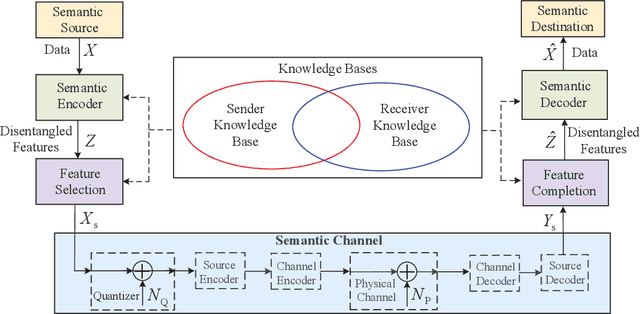
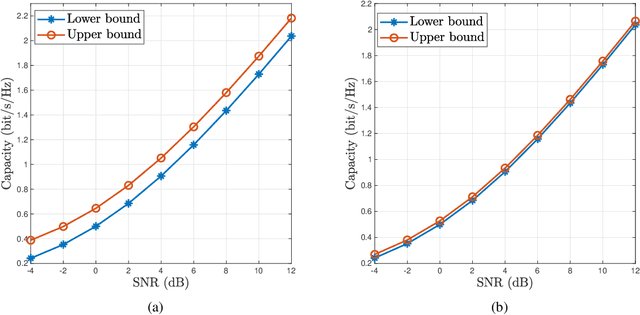

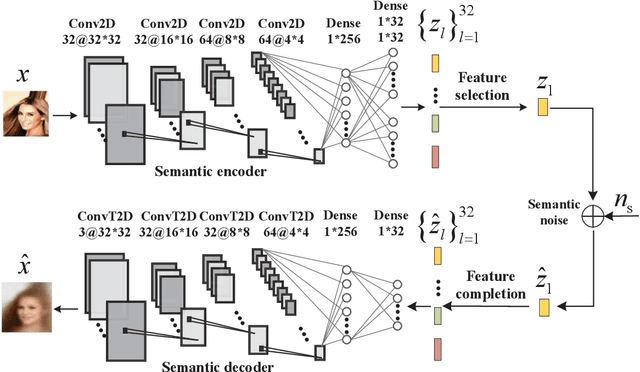
Abstract:Semantic communications utilize the transceiver computing resources to alleviate scarce transmission resources, such as bandwidth and energy. Although the conventional deep learning (DL) based designs may achieve certain transmission efficiency, the uninterpretability issue of extracted features is the major challenge in the development of semantic communications. In this paper, we propose an explainable and robust semantic communication framework by incorporating the well-established bit-level communication system, which not only extracts and disentangles features into independent and semantically interpretable features, but also only selects task-relevant features for transmission, instead of all extracted features. Based on this framework, we derive the optimal input for rate-distortion-perception theory, and derive both lower and upper bounds on the semantic channel capacity. Furthermore, based on the $\beta $-variational autoencoder ($\beta $-VAE), we propose a practical explainable semantic communication system design, which simultaneously achieves semantic features selection and is robust against semantic channel noise. We further design a real-time wireless mobile semantic communication proof-of-concept prototype. Our simulations and experiments demonstrate that our proposed explainable semantic communications system can significantly improve transmission efficiency, and also verify the effectiveness of our proposed robust semantic transmission scheme.
Joint Beamforming and PD Orientation Design for Mobile Visible Light Communications
Dec 21, 2022Abstract:In this paper, we propose joint beamforming and photo-detector (PD) orientation (BO) optimization schemes for mobile visible light communication (VLC) with the orientation adjustable receiver (OAR). Since VLC is sensitive to line-of-sight propagation, we first establish the OAR model and the human body blockage model for mobile VLC user equipment (UE). To guarantee the quality of service (QoS) of mobile VLC, we jointly optimize BO with minimal UE the power consumption for both fixed and random UE orientation cases. For the fixed UE orientation case, since the {transmit} beamforming and the PD orientation are mutually coupled, the joint BO optimization problem is nonconvex and intractable. To address this challenge, we propose an alternating optimization algorithm to obtain the transmit beamforming and the PD orientation. For the random UE orientation case, we further propose a robust alternating BO optimization algorithm to ensure the worst-case QoS requirement of the mobile UE. Finally, the performance of joint BO optimization design schemes are evaluated for mobile VLC through numerical experiments.
 Add to Chrome
Add to Chrome Add to Firefox
Add to Firefox Add to Edge
Add to Edge